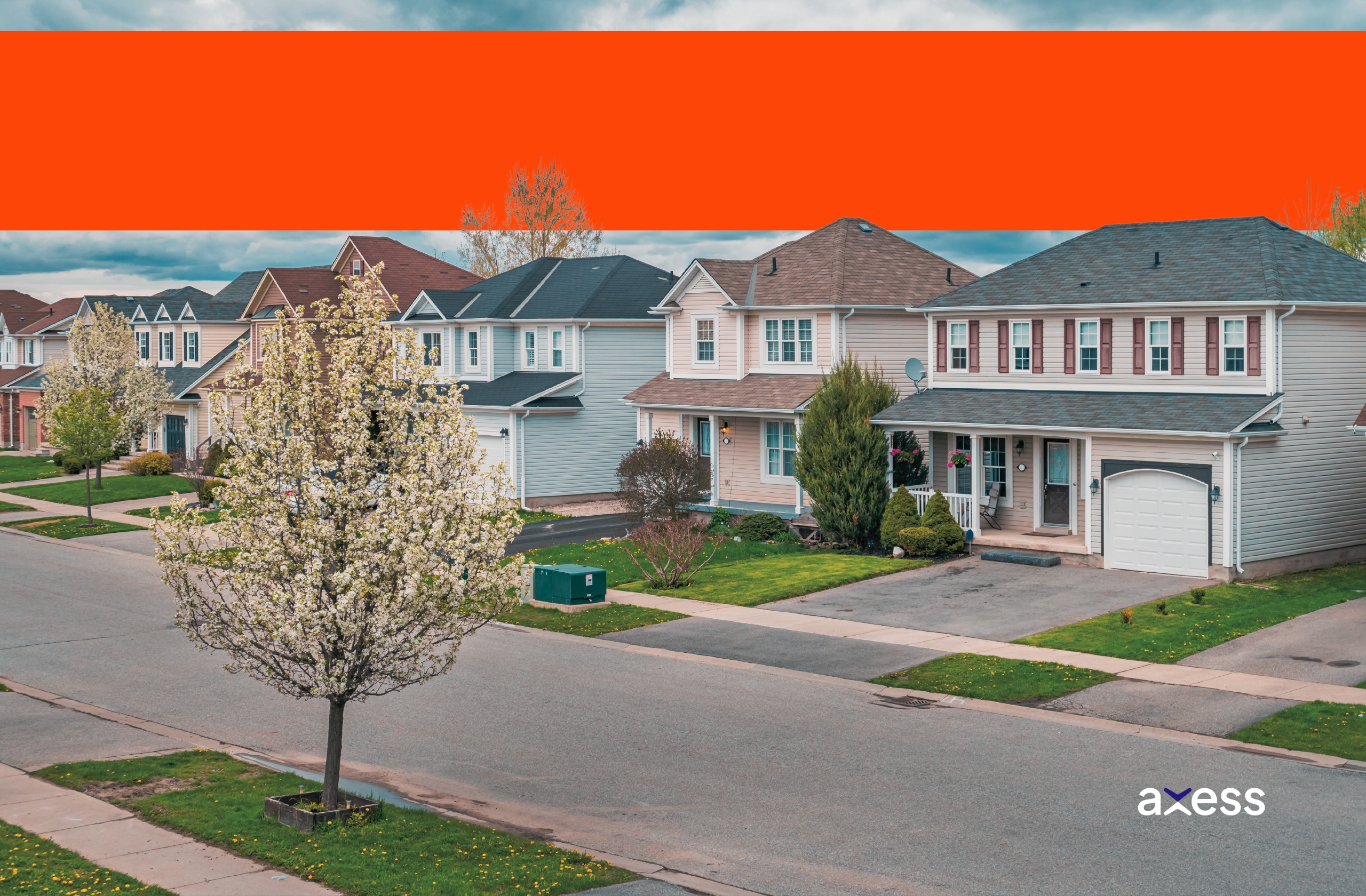Getting Justice Over Property Line Disputes
Published on 2 October 2021, 09:43:26 PM
Rude, unneighbourly hijinx can get you in legal hot water. Ontario courts frown on ‘bad neighbour’ type behaviour”. Don’t let it happen to you by getting property line disputes out of control.
Investigate before you invest when you buy or sell Ontario real estate. Axess Law researches your property title for rights of way, liens or legal issues that can affect your right to clear title.

Four Types of Boundary Disputes
Do these found familiar? You may need legal advice, or a court’s assistance.
- Real estate fraud – your property boundaries were exaggerated when you signed the real estate contract.
- Neighbourly disputes – you and your neighbour disagree on where your property lines start and end.
- Co-owner disputes – you, your spouse, a relative, or other co-owner disagree on who owns what portion of a land parcel.
- Specific performance – you need a court’s help to force a resolution to a property dispute. For example, when your efforts to carry out a legal contract are frustrated.
Who Owns the Trees in Your Backyard?
Your new front or back yard may look like a blank canvas for your landscaping dreams. A pool, an organic garden — the possibilities appear limitless when you are making grand plans for a new home.
Too bad about the tree that’s getting in the way of your ideas. Before you buy a home because you like the yard, talk to your real estate lawyer. You better think twice before taking a chainsaw to a tree that obstructs your view. Even hiring a professional to remove it can land you in trouble.
Are you absolutely sure the tree is yours to cut down?
Trunk Location is Key
Trees with trunks that grow on the boundary between adjoining lots are the common property of both landholders.
Ontario courts have ruled ownership of a tree is not only determined by the trunk at ground level, but below soil level. A tree trunk’s width at eye level (the ground you can see) can be misleading. Most tree surface trunks are thinner than their below-soil span.
By digging a little deeper, you could find the trunk lies in part on the neighbouring property, even though that was not visible at ground level. Before you jump to conclusions a tree is yours, check out the entire tree — from its roots all the way up to the branches.
To Cut or Not to Cut …
Injuring or destroying a tree growing on the boundary between adjoining properties without consent of all landowners is an offence in Ontario. You could pay up to $20,000 in fines and/or be imprisoned for three months.
Smarter to put that pool or garden on hold and do some more investigation. When in doubt, ask an Axess Law real estate lawyer. Contact us now for advice or a referral on tree-related law. See the most common questions you ask us.
Can a Neighbour Claim My Land?
They can, and may, if you neglect to protect your property rights. It’s called adverse possession, and can occur if a neighbour uses your land, without your permission, for an extended period to the point where it appears that they own it. Read about adverse possession in Ontario. Can a squatter claim possession of a vacant property? (FAQ#1)
Survey Your Property for Legal Certainty
Getting a property survey can protect you from neighbourly nightmares. A detailed property drawing by an Ontario land surveyor shows exactly where your land starts and ends. It sites buildings, fences, driveways and roads in relation to neighbouring properties. Easements or rights of way that prevent development are included so you never have to worry about being asked to tear up improvements you make.

Property Survey Can Help You Sell Home
Real estate buyers can be very picky about getting lot dimensions right. Who wouldn’t, with so much riding on what may be the biggest investment of their life? Having the lot size correct in the agreement of purchase and sale can make the difference between closing the deal quickly and hold ups that cost you money, now or later. If a buyer discovers they didn’t get what they paid for, they may pursue you into court.
Micro Mistakes, Big Problems
Even the tiniest mistake can cause grief. Municipalities, for instance, have set back requirements for minimum distances between structures and property lines you must meet before building a home or add-on. With a property survey, you know exactly where your boundaries are, before you start to dig.
Utilities Can Force You to Move a Building
Utility companies frequently place easements on properties to ensure they have the space needed to run power lines and the like. Unless you know about these easements, you could put a garage in a place where it’s not allowed. DIY projects constructed without building permits can be torn down when they encroach on a utility right of way.
Fuzzy Zoning, Fuzzy Thinking
Think about the history of your home. Is it a country cottage or proud heritage home? If your property was built in the early days of your municipality, it may not be 100% on your lot. Before modern zoning regulations, families who built their own home often strayed just inches or feet away from the property line. You probably don’t want to go to court with your next door neighbour over an oversight that occurred long before you bought your home.
Bank Requirements for Mortgage Loans
Many mortgage lenders require that you provide a property survey when you apply to finance a home you plan to buy or build. Surveys up to 20 years old are usually acceptable, as long as the owner hasn’t made major changes to the structure or added something like a granny flat that strays across a property line.
Your title insurance can also hinge on having a property survey. If you are missing a property survey or the one you receive is way out of date, hire a surveyor to help you figure out your legal rights.
Getting the Seller to Pay
You can amend a real estate agreement of purchase or sale to include reasonable conditions that put the burden back on the seller. Be sure yours includes that the seller will provide you with a property survey or pay to have one completed. They probably won’t risk losing a real estate sale by refusing you.
Property surveys can cost up to several thousand dollars if the lot has many buildings and improvements or just a few hundred for raw land. No need for you to pay for this expense when you can talk the seller into it.

How to Deal With Property Disputes
What can you do if your neighbour encroaches on your property? You can:
- Get a professional property survey.
- Put up no trespassing or private property signs.
- Erect fences to define your boundaries.
- Ask the province to arbitrate a fence line dispute. See how here.
- Conduct a property title search through Axess Law.
If your neighbour threatens to meet you in court, ask an Axess Law lawyer about your property line rights. If your matter falls outside our scope, we can refer you to a real estate lawyer who specializes in this area. Our licensed lawyers can video conference with you anywhere in Ontario, 7 days a week, or meet you in person to arrange a property title search.
Affordable Real Estate Lawyers, Anywhere You Are
Access lawyers for less in Greater Toronto Area, Ottawa, or anywhere in Ontario when you buy, sell, or transfer property. Axess Law’s flat fee real estate lawyers are affordable, and our rates are all inclusive (excluding taxes, disbursements, and third-party charges). Axess Law offers you only the legal services you absolutely need. Your final invoice includes no surprises or hidden charges. Your itemized statement of adjustments is explained when we deliver it, and we answer any questions you have about it.
Make Appointments By Phone or Online
Check out our onsite parking and easy transit access next time you need affordable flat fee legal services. Make an appointment by dialing toll-free to 1-877-552-9377 or 647-479-0118 in Greater Toronto Area, or use our online booking form. Click here to start a file or find Axess Law locations in Ottawa and Greater Toronto Area. We’re open 7 days a week, with day or evening appointments that fit your schedule.





